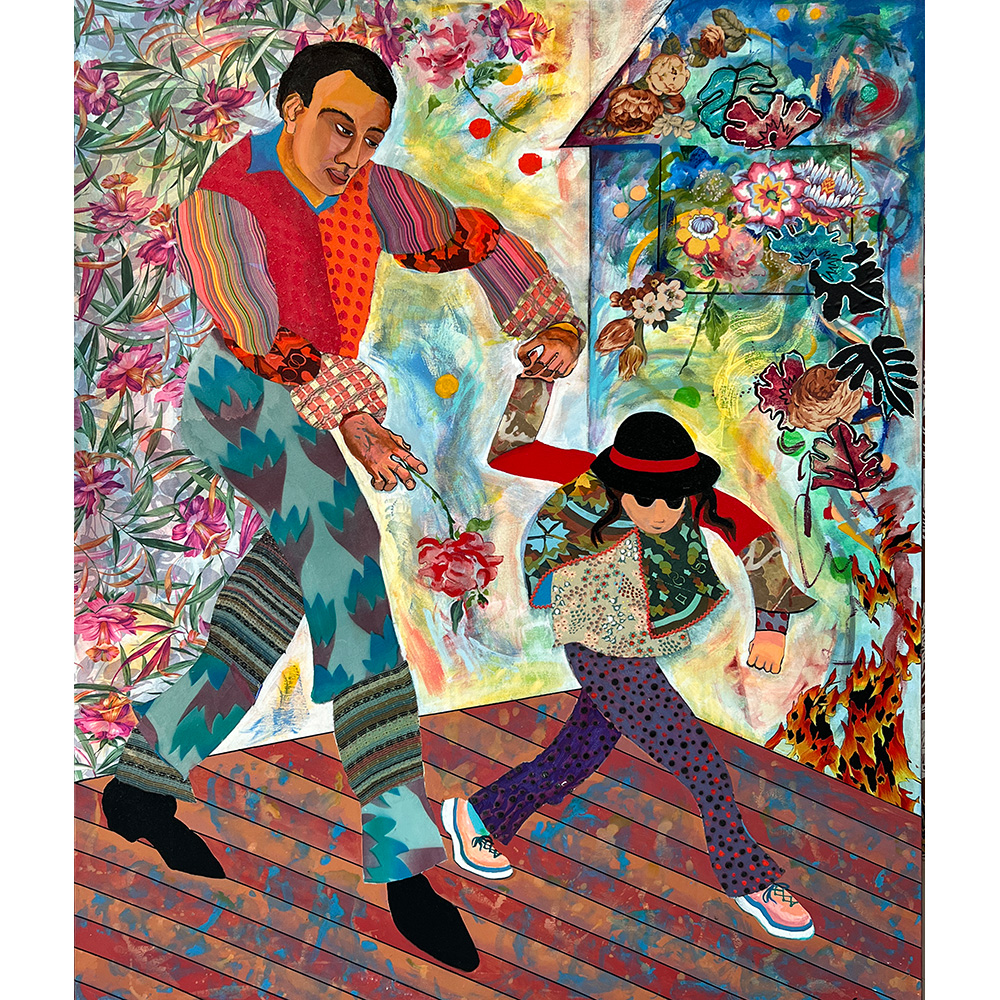Artwork Description
Miriam Schapiro – Father and Daughter
Dimensions: 72 x 60″
Year: 1997
Medium: acrylic and fabric on canvas (femmage)
Miriam Schapiro was an American-Canadian artist known for her vibrant, geometric quilts and her minimalistic abstract paintings. Her work often tackled feminist issues through tradition crafts, work which was historically associated with women and often devalued by the art world. In her fan shaped quilt Anatomy of a Kimono (1976), the artist assembled pieces of Japanese Kimonos through ornate needlework—elevating “woman’s work” to the status of high-art. Born on November 15, 1923 in Toronto, Canada, the artist soon moved to New York after her father was admitted to the Beaux-Arts Institute of Design. She went on to study art under Paul Brach, who later became her husband, at the State University of Iowa. After working alongside Abstract Expressionists in New York, she founded the Feminist Art Program at the California Institute of the Arts with Judy Chicago, dedicated to fostering the careers of female artists. In 1972, the two artists collaborated with a number of other prominent female artists in the groundbreaking installation project Womanhouse, where Schapiro first exhibited her sculpture Dollhouse. From the 1970s on, she began producing collages created from colorful fabrics, which she called “femmages,” which combined skills used by the Old Masters with historically female crafts. In her later work, the artist explored her Jewish heritage, and often painted images of empowered Jewish women, as seen in Mother Russia (1994) and My History (1997). Schapiro died in June 20, 2015 in Hampton Bays, NY. Today, her work is held in the collections of the Brooklyn Museum, the Smithsonian American Art Museum in Washington, D.C., and the Metropolitan Museum of Art in New York, among others. – Artnet
Brazenly using craft and pattern was part of Miriam Schapiro’s effort to elevate traditional women’s work to fine art status. Schapiro, a central figure in the feminist art movement, is also known for directing the landmark Womanhouse (1972) installation together with Judy Chicago in Los Angeles as an outgrowth of the Feminist Art Program they cofounded at the California Institute of the Arts. One of the founders of the Pattern and Decoration Movement, Schapiro began making what she called femmages around this time, combining acrylic paints and feminine fabrics as in Tidy Art (1976), to honor women whose artistry had historically been considered inferior. Schapiro’s artworks are held in the collections of the Brooklyn Museum, the Metropolitan Museum of Art, and the Smithsonian American Art Museum, among others.
-Artsy

